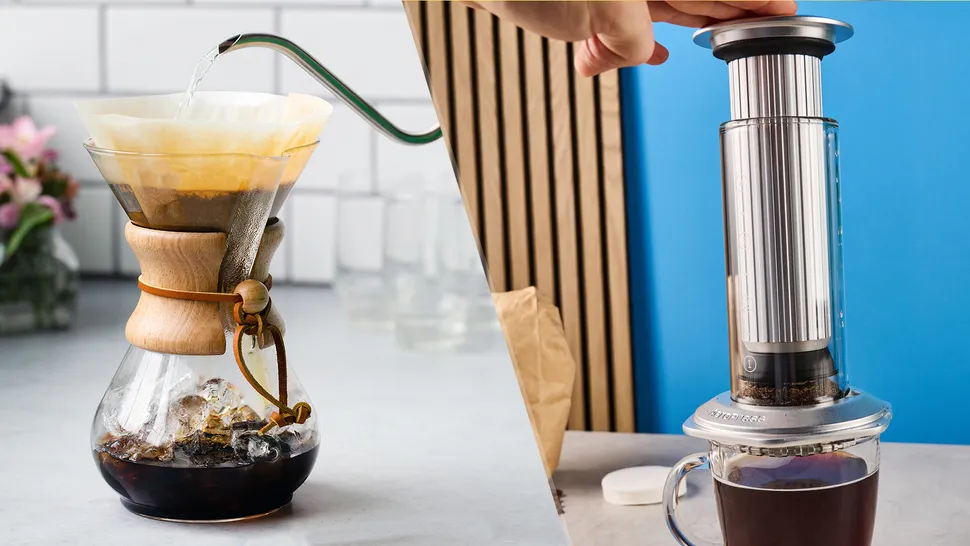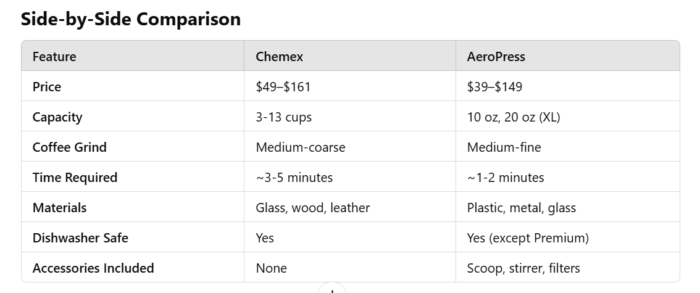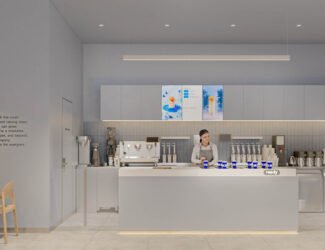
AeroPress vs. Chemex: Which Brews a Better Coffee?
If you’re even a little into coffee, chances are you’ve come across the AeroPress and Chemex. These two brewing methods have captivated coffee enthusiasts worldwide, each offering unique qualities that make them among the top choices for at-home brewers. So, which one is better? Let’s break it down based on a few key factors.
AeroPress: Bold, Portable, and Versatile
- Brewing Style: The AeroPress uses a combination of immersion and pressure. You steep the coffee grounds in hot water, then press them through a filter (either paper or metal, depending on preference). This method creates a coffee with a robust, concentrated flavor that some compare to espresso.
- Flavor Profile: The result is a full-bodied coffee with rich flavors and a clean finish. Many baristas love the AeroPress for its versatility; it can yield anything from a lighter brew to a more concentrated, espresso-like shot.
- Customization: With AeroPress, you have control over grind size, water temperature, and brewing time. There’s even an “inverted” method that changes the brewing dynamics, making it a dream for anyone who likes to experiment.
- Brewing Time: AeroPress is quick — typically taking around 1-2 minutes, making it convenient for busy mornings.
- Portability: The AeroPress is compact and durable, ideal for travel or outdoor brewing. If you’re the kind who loves a great cup on the go, this could be the brewer for you.
Chemex: Stylish, Elegant, and Clean
- Brewing Style: The Chemex is a pour-over method, where coffee grounds are placed in a thick paper filter. The design allows water to pour over slowly, capturing oils and fine particles to create a clean cup.
- Flavor Profile: Chemex is known for its smooth, light flavor, making it ideal for highlighting the subtleties of single-origin beans. The coffee it produces is balanced and bright, making it a favorite for those who appreciate a delicate, refined brew.
- Customization: With Chemex, you control the grind size and pour speed, though it doesn’t offer as much experimentation as the AeroPress.
- Brewing Time: It takes a bit longer, about 3-5 minutes, so it’s perfect for those who don’t mind spending a little more time crafting their coffee.
- Aesthetic Appeal: Chemex’s elegant, hourglass-shaped glass and wooden collar make it as much a display piece as a coffee brewer.
Side-by-Side Comparison
Which One is Easier to Use?
AeroPress has a bit of a learning curve, particularly with its need for quick movements (pouring, stirring, and pressing within seconds). But once you get the hang of it, it’s straightforward and fun. You can even make a cold brew in the AeroPress with a few adjustments.
Chemex, on the other hand, is simple and intuitive. Place the filter, add grounds, pour, and wait. It’s perfect for those who want an elegant, easy routine with a slow, relaxing brewing process.
Flavor Showdown
The AeroPress edges out slightly in terms of a richer, more complex flavor. The coffee has a soft, airy quality with depth, making it almost “creamy” in texture. Chemex’s flavor, by contrast, is lighter and balanced, with a clean, bright taste that’s perfect for savoring nuanced single-origin beans.
Cleaning and Maintenance
AeroPress is relatively easy to clean — you just “pop” the grounds out with the plunger. However, if you have the Premium version, handwashing is recommended. Occasionally, grounds might stick, but a quick rinse usually does the trick.
Chemex wins in simplicity here: remove the filter and grounds, rinse with hot water, and it’s ready for the next brew. Its design makes it easy to clean without touching coffee grounds.
Verdict: Which One Should You Choose?
If you crave versatility, experimentation, and a bolder coffee, AeroPress might be the one for you. Its quick brew time and compact design make it ideal for travel or quick, rich brews at home. However, if you prefer a light, clear cup and enjoy the elegance of slow pour-over brewing, Chemex is the way to go.
In truth, both are stellar coffee makers. Each brings something unique, and the decision comes down to your coffee preference and lifestyle. Why not have both and enjoy the best of both worlds?




